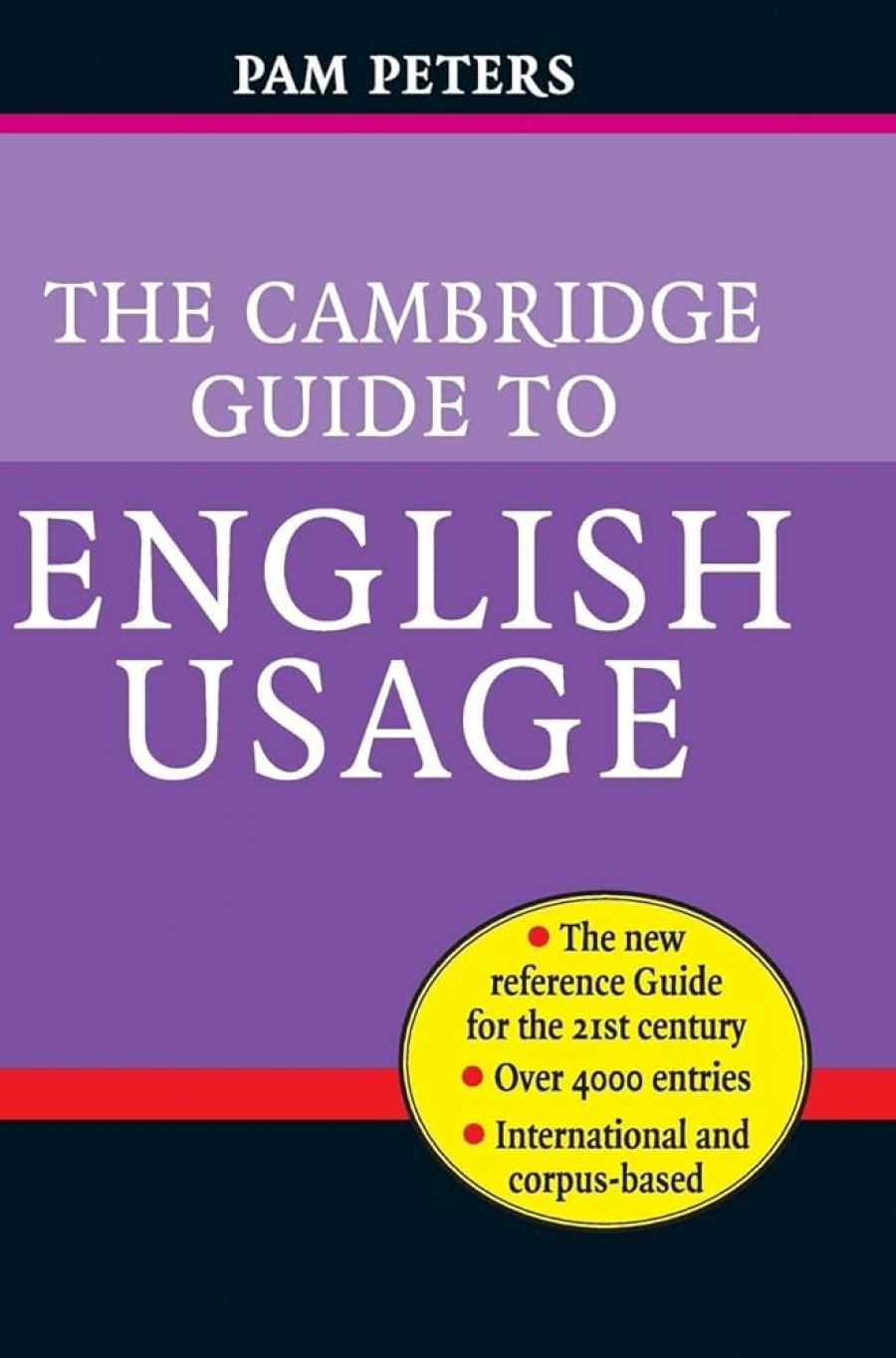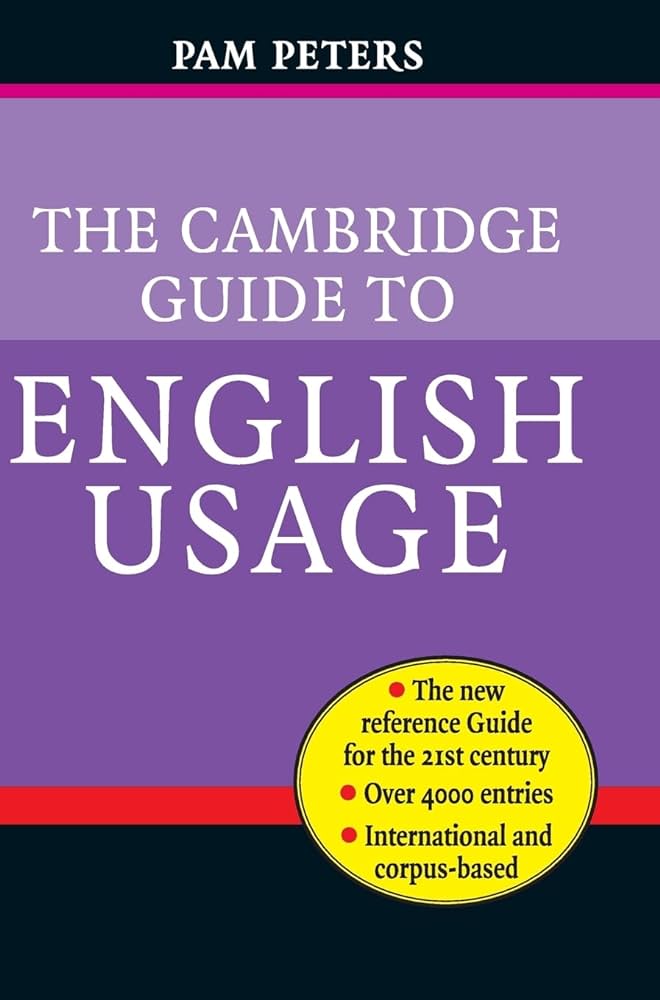
- Free Article: No
- Contents Category: Non-fiction
- Custom Article Title: No Descriptivist's Picnic
- Review Article: Yes
- Article Title: No Descriptivist's Picnic
- Online Only: No
- Custom Highlight Text:
The Cambridge Guide to English Usage is written by the Australian academic Pam Peters, and is an interesting extension of the work she published in The Cambridge Australian English Style Guide (1995). This time Peters examines more than 4000 issues of word meaning, spelling, grammar, punctuation and style as exemplified in the Englishes of the UK, the US, Canada, Australia and New Zealand. The book will appeal to both a specialist and a general readership.
The major players here are the UK and the US, and the evidence of usage for these domains is drawn largely from corpora (or should it be corpuses?), especially the 100 million-word British National Corpus (BNC) and a subset of 140 million words of American English from the Cambridge International Corpus (CCAE). The evidence for usage in the other Englishes is not corpus-based, and relies largely on dictionaries, style guides and questionnaires.
- Book 1 Title: The Cambridge Guide to English Usage
- Book 1 Biblio: CUP, $75 hb, 608 pp
- Book 1 Cover Small (400 x 600):

- Book 1 Cover (800 x 1200):

The methodology of most of the book is descriptive. We are, for example, told that adapter and adaptor are interchangeable in the UK and the US, but that adapter is four times more common than adaptor in the US, and that the situation is reversed in the UK. We are told that funneled is the standard US spelling, but extremely unpopular in the funnelled UK; in the BNC, there is no example of the US spelling whatsoever.
But if, after reading the many examples of this kind, you thought this book was going to be a descriptivist’s picnic, you would in part be wrong. For some of these examples of divided usage, Peters suggests a preferred form that might be used in International English. These suggestions are not great in number, and are generally conservative, but it is interesting that they should be offered in a book that is elsewhere largely descriptivist. If it is possible to be prescriptive in some cases, why not in all?
Most of the preferred usages are based on evidence of widest distribution, although there are occasional appeals to paradigm or linguistic consistency, and even to etymology. The appeals to linguistic consistency are generally sensible; they are not silly in the way English spelling reformers are generally sui generis silly.
The example that surprised me most was the reasoning that decided between Internet and internet. Peters notes that when the network first appeared in the 1970s the spelling was internet. But in the BNC only about five per cent of writers use lower case, and only about one per cent in CCAE. Nevertheless, Peters’ preferred form for International English is internet: ‘Given that internet had no capital letter in the first place, and the generic nature of its use, the decapitalized form makes sense.’ This demonstrates the way the grounds for choosing one form over another can so easily shift.
With the divided usages, it is usually a matter of the old lion Britain up against the new spunk on the block, American English. In general, Americans are single-minded in their preference for one form or the other, whereas the poms sometimes have the linguistic habit of swinging both ways – so that, if American English uses only one of two forms, and British English both, it seems inevitable that the most widely distributed form will come out on top.
Even so, arguments other than the force of numbers are put forward. In the -or/-our divide Peters comes down in favo(u)r of -or (the preferred US form) since it provides a pattern which is consistent with the spelling of the derivatives – why humour but humorous? In her discussion of Australian usage, Peters argues that the ‘-or spellings are more evident in some states than others, especially Victoria and South Australia, where the major newspapers have continued to use it’. I have searched the pages of the Melbourne Age and Herald Sun, and the Adelaide Advertiser, and there wasn’t an -or in sight, so I am not sure of the origin of this story, which I have heard elsewhere. In the -re/-er divide (centre/center, litre/liter) Peters comes down in favour of the British -re spelling since it allows for a consistent pattern for all English words of this type, including those words which resist the -er spelling (acre, mediocre) even where -er is the norm. Similarly, Peters argues that the American spelling skeptic is to be preferred to the British sceptic on the grounds of etymology (the original Greek form of the word) and pronunciation.
At this point, I started to wonder whether I wanted the marvellously anarchic English language to conform to linguistic logic, and whether any of these preferred forms have any hope of winning on the calmly logical or linguistic grounds that Peters puts forward. The winning form of English has always been the one with political clout. In the past, this was British, but for the last sixty years it has been the American. The influence of American English is increasingly evident in the expanding world of electronic communication, especially the Internet. In this situation, it is difficult to see how an ‘illogical’ American form (center) could give way to a ‘logical’ British form (centre) on the international stage. But as this book clearly demonstrates, the battle is on!


Comments powered by CComment